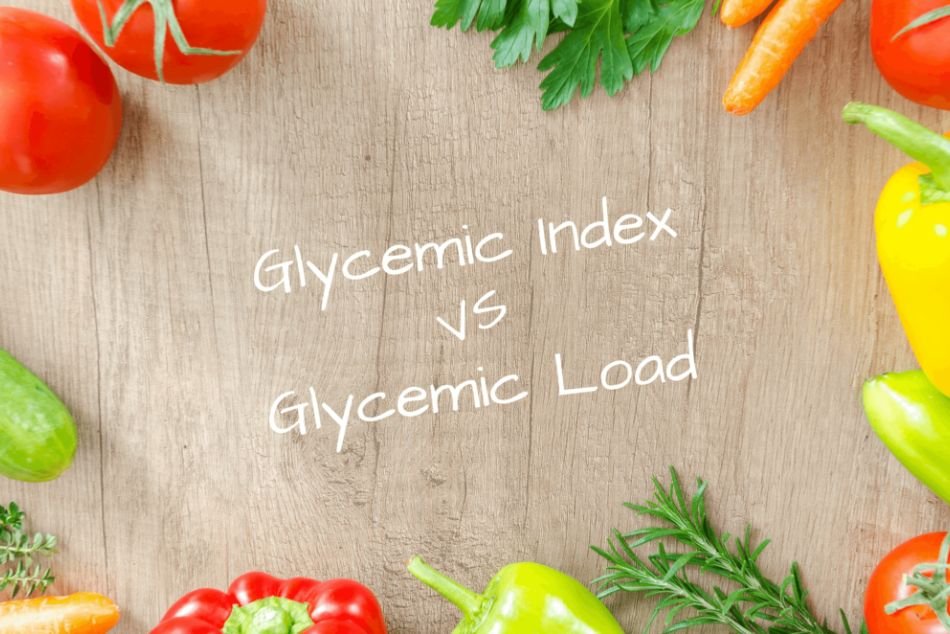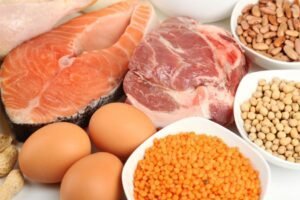Glycemic Index vs Load: The Basics You Must Understand
When it comes to carbohydrates, you’ve probably heard about the glycemic index (GI) and glycemic load (GL)—two terms that often pop up in diet, fitness, and health conversations. While both are related to how foods affect your blood sugar, they are not the same thing. Understanding glycemic index vs load can help you make smarter food choices, manage your energy levels, and even improve performance in the gym.
For anyone focused on fitness, bodybuilding, weight management, or simply maintaining steady energy throughout the day, knowing the difference between GI and GL isn’t just useful—it’s essential. This guide will break down both concepts in detail, compare them side by side, and show you how to use them for real-world meal planning and better results.
What Is Glycemic Index?
The glycemic index (GI) is a system that ranks foods based on how quickly they raise blood sugar after being consumed. It uses a scale from 0 to 100, with pure glucose set at 100.
- Low GI Foods: 55 or less (e.g., lentils, broccoli, peanuts)
- Medium GI Foods: 56–69 (e.g., sweet corn, quick oats)
- High GI foods: 70 and above (e.g., white bread, rice cakes, watermelon)
When researchers measure GI, they typically test how a food impacts blood sugar levels compared to a reference carbohydrate (glucose or white bread). The test uses 50 grams of carbs from the food, eaten alone, and measures the response over two hours.

Why GI Matters
- Blood Sugar Control: Lower-GI foods lead to slower, steadier rises in blood sugar.
- Satiety: Foods with a low GI tend to keep you full longer.
- Energy Stability: They prevent sharp spikes and crashes in energy.
For example, broccoli—a staple for many bodybuilders—not only provides fiber and micronutrients but also has a low GI, making it great for sustained energy and appetite control.
However, GI has limitations: it doesn’t account for how much carbohydrate you’re actually eating, which is where glycemic load comes in.
What Is Glycemic Load?
The glycemic load (GL) refines the GI concept by considering the amount of carbs in a serving of food. It’s calculated using the formula:
GL = (GI × grams of carbs per serving) ÷ 100
Categories of GL
- Low GL: 10 or less
- Medium GL: 11–19
- High GL: 20+
Why GL Matters
GL provides a more practical view because it adjusts for portion sizes.
Take watermelon as an example:
- Watermelon has a high GI (~72).
- But a standard serving contains very little carbohydrate (about 11g per cup).
- Result: low GL (~8).
So, eating a slice of watermelon won’t actually cause a massive blood sugar spike, despite its high GI ranking. Contrast that with a bagel: both high GI and high carb, making its GL much higher—and more impactful on blood sugar.
This distinction is critical for real-world diets, where portion sizes vary and foods are rarely eaten in isolation.
Glycemic Index vs Load: Key Differences
While GI and GL are closely related, they serve different purposes:
- GI measures the quality of carbohydrates (how quickly they turn into glucose).
- GL measures the quality and quantity of carbs (GI plus serving size).

Example Comparison
- Carrots: High GI (~70), but one serving has few carbs, so GL is low (~5).
- Bagel: Medium GI (~65) but loaded with carbs per serving, so GL is high (~25).
This shows why comparing glycemic index vs load is important: GI alone can be misleading without context, while GL gives a fuller picture.
Why It Matters for Fitness, Bodybuilding, and Nutrition
Carbs are the body’s primary energy source, especially for workouts. Understanding how different carbs behave can influence your training performance, recovery, and body composition.
Pre-Workout Fuel
- Moderate GI/GL foods (like oats with fruit) provide sustained energy.
- Avoid very high GI/GL foods before training, unless you need a quick burst of energy.
Post-Workout Recovery
- High GI/GL foods can be useful here, as they replenish glycogen stores faster. Examples: white rice, potatoes, bananas.
- Pairing with protein helps muscle repair and growth.
Weight Management
- Diets rich in low-GI/GL foods promote satiety and reduce cravings.
- This helps regulate appetite, which is critical during fat-loss phases.
Blood Sugar Stability
Even if you’re not diabetic, steady blood sugar helps prevent energy crashes, irritability, and overeating. For athletes and bodybuilders, this translates into better consistency in training and recovery.
Pros & Cons of Each
Glycemic Index
Pros
- Simple and widely researched.
- Easy to look up in charts.
- Helps identify fast vs slow-digesting carbs.
Cons
- Ignores portion size.
- Food preparation affects values (e.g., pasta al dente vs overcooked).
- Doesn’t account for food combinations (adding fat/protein lowers actual response).
Glycemic Load
Pros
- More accurate for real-world meals.
- Reflects both quality and quantity of carbs.
- Better tool for meal planning.
Cons
- Requires calculation or reference tables.
- Less familiar to the general public.
In short: GI is a broad indicator, GL is a practical tool.
Real-World Application: Meal Planning With GI & GL
Understanding glycemic index vs load becomes most useful when applied to actual meals. Here’s how you can use both concepts:
Step 1: Choose Base Carbs Wisely
- Low GI/GL: oats, quinoa, lentils, beans, sweet potatoes.
- Moderate GI/GL: brown rice, fruits like apples, oranges.
- High GI/GL (best post-workout): white rice, potatoes, white bread.
Step 2: Pair Smartly
Add protein, fiber, and healthy fats to slow digestion:
- Oats + whey protein + nuts
- Brown rice + chicken breast + veggies
- White rice + fish + avocado (great balance for muscle recovery)
Step 3: Timing Matters
- Pre-workout: go moderate (to sustain).
- Post-workout: go higher (to replenish).
- Rest days: stick mostly to low GI/GL for appetite and blood sugar control.
Sample Day Plan
- Breakfast: Oatmeal with berries and almonds (low GI, low GL).
- Snack: Apple with peanut butter (low GI, moderate GL).
- Pre-workout: Whole-grain bread with banana slices (moderate GI/GL).
- Post-workout: White rice with grilled chicken (high GI/GL, ideal for recovery).
- Dinner: Quinoa salad with mixed veggies and olive oil (low GI/GL).
By mixing GI and GL smartly, you can align carb choices with fitness goals—whether that’s fat loss, bulking, or just staying energized.
Common Myths & Misunderstandings
1) “High GI foods are always bad.”
Not true. They have their place, especially post-workout when fast glycogen replenishment is needed.
2) “GI and GL values never change.”
Cooking method, ripeness, and food combinations all influence them. Example: al dente pasta has a lower GI than overcooked pasta.
3) “Only diabetics need to care.”
Wrong. Even healthy athletes benefit from steady blood sugar and better carb timing.
4) “Fruits are bad because of sugar.”
Many fruits, despite their natural sugar content, are low to moderate GI/GL thanks to their fiber content.
How to Use GI & GL Smartly Together
- Combine concepts: Use GI for a quick reference, GL for portion-based decisions.
- Balance meals: Adding protein, fat, or fiber lowers overall glycemic response.
- Adjust for goals:
- Bulking? Higher GL post-workout is beneficial.
- Cutting? Stick to low GI/GL foods to stay satiated.
- Track portion sizes: Overeating even low-GI foods can still raise blood sugar significantly.
Quick Reference Table
| Food Item | GI | Serving Size | GL |
|---|---|---|---|
| White Bread | 70 | 1 Slice | 10 |
| Brown Rice | 68 | 1 Cup | 20 |
| Oatmeal | 55 | 1 Cup | 13 |
| Lentils | 32 | 1 Cup | 5 |
| Watermelon | 72 | 1 Cup | 8 |
| Carrots | 70 | 1 Medium | 5 |
| Sweet Potato | 63 | 1 Medium | 17 |
Summary & Takeaway
Understanding glycemic index vs load can transform the way you approach carbohydrates. GI tells you how quickly carbs raise blood sugar, while GL adds context by factoring in portion size.
- For stable energy and appetite control, focus on low GI/GL foods.
- For training fuel, use moderate GI/GL carbs before workouts.
- For recovery, don’t be afraid of high GI/GL carbs to restore glycogen quickly.
Both metrics have their place, and using them together gives you the most practical guide for real-world eating.
Final Thoughts
In the end, nutrition isn’t about demonizing carbs but about using them wisely. By mastering the difference between glycemic index vs load, you gain control over your energy levels, appetite, and performance. Whether you’re chasing fat loss, muscle gain, or just better health, applying these principles can make a real difference in your results.







